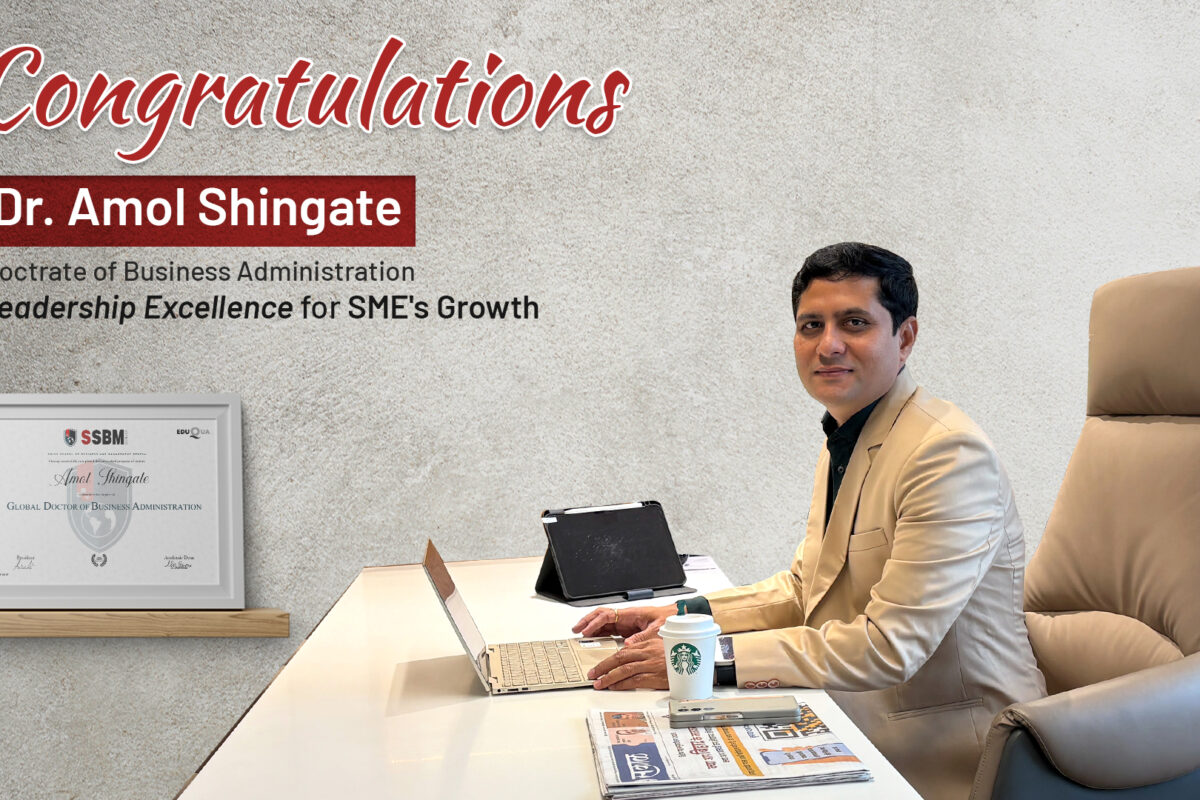A Moment of Pride for the Supreme Family
We are delighted to share an inspiring milestone that marks a moment of great pride for the entire Supreme family. Our CEO, Mr. Amol Shingate has successfully completed his Doctorate from the Swiss School of Business and Management (SSBM), Geneva, Switzerland.
His doctoral research, titled “Leadership Excellence for SME’s Growth,” explores transformative leadership frameworks that empower businesses to scale, innovate & thrive in dynamic markets. It is a subject deeply connected to his professional journey and his passion for building sustainable, growth-driven organizations.
This achievement not only reflects his relentless pursuit of knowledge but also reinforces his commitment to driving sustainable growth & excellence across the Supreme ecosystem. This milestone marks the culmination of three years of learning, reflection, and leadership exploration.
Dr. Amol Shingate’s academic accomplishment is a testament to his visionary approach, disciplined leadership and unwavering dedication to advancing our industry. We are confident that the insights from his research will further strengthen Supreme’s strategic direction and open new avenues of innovation & value for our clients, partners and teams.






